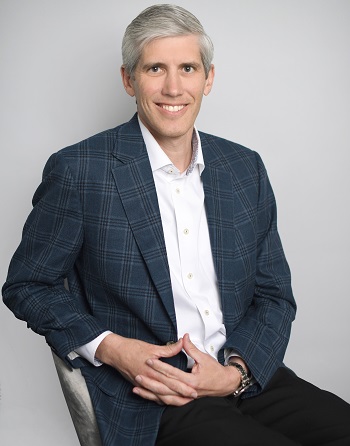What I’ve Learned from Conversations about Post-Acute Care for Veterans
Why do many VA Medical Centers (VAMCs) struggle to efficiently arrange post-acute care (PAC) for our country’s veterans? What are the obstacles they face? I’ve spent the past several months looking into these questions, and the search for answers has led me to some very revealing conversations.
However, before I share some of my findings, I want to be clear about one thing: The people who staff our nation’s VAMCs, from social workers to physicians, are unwavering in their dedication to providing the highest quality care to veterans. Moreover, they are among the most talented professionals in all of healthcare.
My goal has been to get a clearer understanding of the systemic issues that compromise the ability to arrange PAC on a timely basis. I also want to stress that these obstacles can — and must — be overcome.
To get to the heart of the matter, I spoke with social work executives and other leaders in VAMCs across the country. From these conversations, augmented by additional research on the topic, I’ve come away with the following seven key insights:
#1: Social workers are stretched to the limit and beyond.
It’s not just that social workers are the primary coordinators of PAC, but they also typically handle the job with little or no administrative support. On top of that, they must also attend to a host of other responsibilities, such as discharge planning, financial assistance, crisis intervention, advocacy, and education.
#2: Outdated technologies and limited options hamper timely PAC placements.
Social workers typically rely on rudimentary technologies — phone, printers, and fax machines — to accomplish PAC placements. It’s a big reason why they can get mired in administrative tasks that detract from their core responsibilities. Compounding the challenge, their PAC options are often limited to providers they know or recommendations by peers at other VAMCs. This is complicated by the fact that nearby non-VA hospitals are competing for the same PAC beds, and many of those facilities use some type of automated system that gives them an advantage.
#3: Veterans often wait several days or longer for PAC placements.
When already overburdened staff are slowed down by the inherent inefficiencies of conventional placement processes, delayed PAC is almost inevitably the result. From my conversations, I’ve learned it’s not uncommon for veterans to wait five to seven days — and, in some rare cases, weeks or longer — for PAC placement.
#4: Social workers can’t devote adequate time to every veteran.
Given their limited time and resources, social workers typically have to focus much of their time on high-risk or high-need patients. This leaves little time to assist lower-risk/need veterans with their PAC arrangements and other services available to them.
#5: Delayed PAC has consequences for veterans and facilities.
When patients have to wait days or even weeks for placement into a PAC facility, the negative effects are felt at multiple levels. For patients, these delays mean postponed rehab, therapy and other post-acute services, which can extend recovery time and increase the risk for readmission. For the VAMC, the consequences include extended length of stay and the unavailability of acute-care beds for other incoming veterans with pressing health issues.
#6: Addressing these issues correlates to top strategic priorities.
The strategic initiatives being pursued by VAMCs include accelerating access to care, improving veteran satisfaction, reducing length of stay, and preventing readmissions. Delays in PAC placement have a profound impact on each of these areas.
#7: There’s a better way to achieve PAC placements for veterans.
Managing PAC doesn’t have to be a weakness for VAMCs. In fact, with the right processes supported by best-of-breed technology, it can become an area of strength. One VAMC studied the impacts of redesigning and automating its PAC placement process and identified the following benefits:*
- Decreased referral response time — from six hours to 30 minutes
- Reduced time spent on discharge planning from 20 hours to two hours
- Increased patient satisfaction and decreased readmissions
- Enhanced social worker productivity, including the ability to support all veterans who need PAC
I welcome the opportunity to speak with other VAMC leaders about their challenges and how Central Logic might be of assistance. Click here to get in touch with me directly.
How Central Logic supports PAC placements for veterans
Central Logic, the leading healthcare access and orchestration company, now offers VAMCs our Ensocare solution, developed to support smooth, timely patient transitions to skilled nursing, rehab, and other PAC settings. The curated Ensocare network encompasses more than 140,000 PAC providers across the country. Using Ensocare, social workers and case managers are able to confirm patient placements within an average of 30 minutes.
Ensocare is the only off-the-shelf solution of its kind with a VA Authority to Operate (ATO) and is deployed in the VA Enterprise Cloud as a managed service. It integrates with VistA and Cerner, creating workflow efficiencies and eliminating the need to download patient records and send information via fax.
About the author:
Bill is a graduate of the U.S. Naval Academy and a 10-year Navy veteran who served in Europe, the Middle East, and South America. Bill worked for 16 years at GetWellNetwork, which develops interactive patient care solutions for hospitals and patients. In that position, he saw an opportunity to help the nation’s veterans and founded a new business line within GetWellNetwork to engage veterans in their own care. Bill is currently Vice President of Government Solutions at Central Logic.
*(Source: JAHVA, VISN 8):
